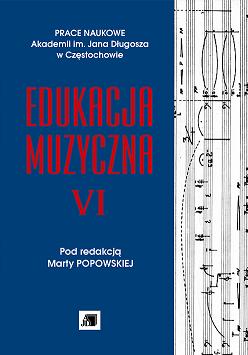Inspiracja religijna w dziełach fortepianowych i klawesynowych Mariana Sawy
Religious inspiration in Marian Sawa’s works for piano and harpsichord
Author(s): Marcin Tadeusz ŁukaszewskiSubject(s): Fine Arts / Performing Arts, Music
Published by: Uniwersytet Jana Długosza w Częstochowie
Keywords: Marian Sawa; piano
Summary/Abstract: Marian Sawa (1937–2005) wrote music for piano and harpsichord between 1967 and 2004. His early works, dating from his student years, demonstrate the composer’s interest in the neoclassical aesthetic, whereas the later ones (particularly those dating from the 1990s and the last years of his life) exhibit features of a highly individual musical idiom. These include primarily the drawing of inspiration from sacred music and the folk music heritage (these inspirations overlapping ), often linked with virtuosity and motoric drive. These features are also present in Sawa’s piano music and make it possible to distinguish in it three basic strands: dance and folk-influenced, virtuosity (toccata) and the sacred. Sawa’s idiom is rooted in both the composer’s musical and non-musical experiences, which include the childhood years spent in the countrywide, his father’s work as an organist in àopiennik, his own studies at the Organ School run by the Salesian Order in PrzemyĞl and his work as a church organist. Sawa’s religious inspiration, which is discussed in my article, seems to be one of the most readily recognizable features of the composer’s entire instrumental output. It is most evident in his organ compositions but is also present in his works for piano and harpsichord. In most of his pieces Sawa used stylized quotations from Polish church songs (Trzy elegie / Three Elegies, KolĊdowe granie / Christmas Carolling, Cztery kolĊdy / Four Christmas Carols, III Mazurek / Mazurek No. 3) and from Gregorian chant (the Mass setting Orbis Factor). Sawa also used tunes in crudo. He paid utmost attention to ensure that these sources are not overshadowed by other compositional devices. Hence the quoted melodies are presented in a very lucid form and against simple harmonic backgrounds. This is not to say that the harmonic writing lacks original solutions (Sawa’s typical harmonic ideas include consonances based on fourths, on combinations of fourths and fifths and of sevenths and fourths or tritones, on augmented triads and bi-functional patterns, which do not hamper the presentation of the quoted material but often support it. Indeed, the quoted melodies seem to be assigned a primary role, similarly to that played by the text in Sawa’s vocal and vocal-instrumental compositions. Sawa’s selected piano pieces discussed in my article centre on the two extreme axioms of human existence, birth (of God-Man: Maáe kolĊdowanie / Little Carolling, Cztery kolĊdy / Four Christmas Carols) and death (Trzy elegie / Three Elegies, Rapsod / Rhapsod). Marian Sawa’s piano works, even though remaining rather little known, occupy an important place in his compositional legacy and in the history of post-1939 Polish piano music as a whole. The latter comprises over 3000 pieces for piano solo and so Sawa’s output is therefore only a small fraction of it. In terms of opus numbers, however, it belongs to the most numerous, alongside those of GraĪyna Bacewicz, Mariusz Dubaj, Witold Friemann, Piotr Lachert, Miáosz Magin and Aleksander Tansman. Once Sawa’s piano works are ensured a broader presence in the public consciousness, it will be possible to appreciate fully their artistic and didactic merits.
Journal: Edukacja Muzyczna
- Issue Year: 2011
- Issue No: 6
- Page Range: 35-89
- Page Count: 55
- Language: Polish

